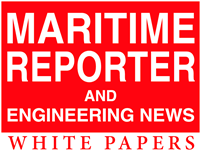
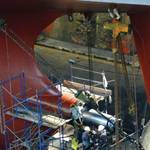
Anything can happen on a jobsite. Your equipment could malfunction or the weather might cause a whirlwind of unexpected issues, or even worse, someone could get hurt. Unfortunately, not much can be done when circumstances such as those arise, which is why developing preventive strategies is crucial to having a successful and safe project. One of those strategies is always choosing safe and reliable lifting equipment. But the question that remains: is it safer to rent or to buy?
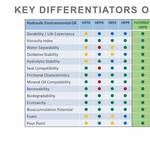
There are numerous factors that are driving global environmental regulatory growth and the growth in renewable lubricant technologies, such as natural resource constraints, standardizing requirements due to globalization, public opinion and pressure, increase in climate change concerns, new technologies, new evidence from research and overall growing Environmental Health and Safety (EHS) concerns, and most recently the improvements in the durability of lubricants made from renewable technologies. According to environmental consultants and advisors, there are currently thousands of new environmental regulations awaiting attention from legislators and regulators around the globe. Different standards hamper growth and thus, pressure to harmonize regulations is likely to continue alongside the regional and global integration of markets.
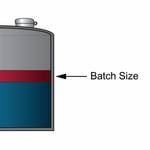
Accurate, on-the-spot measurement of marine bunkering is critical for both cost control and relationship management. The Micro Motion® Certified Marine Bunker Measurement Solution (CBMS) provides highly accurate data plus a bunker ticket that is available immediately after the bunker is complete. Depending on the implementation, the bunker measurement is certified by Nederlands Meetinstituut (NMi), the notified body for testing to the guidelines of the European Instruments Directive (MID) and Issuing Authority for OIML (International Organization for Legal Metrology). The Micro Motion meter meets the OIML standard R117-1 and the overall solution meets MID Directive 2004/22/EC Annex MI-005.
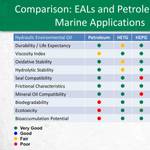
Even the smallest hydraulic system failure can be very costly in terms of lost productivity, change-out times and repairs. This is compounded in large-scale operations, such as oil rigs or dredging sites. When a hydraulic system failure occurs, it is commonly blamed on the oil or hydraulic fluid being used, and rightly so, since it is estimated that 90 percent of the time a fluid-related pump failure is due to contamination. However, rather than simply questioning the quality or performance of the fluid itself, it is important to examine HOW the contamination occurred, what might have been done to prevent it, and to use this information to mitigate potential future problems. According to original equipment manufacturers and tribologists, the number one cause of hydraulic system failure is water contamination. Through a series of chemical reactions, the presence of water in the system builds a corrosive environment, which shortens the life of the pump or other equipment. While it is impossible to prevent water from getting into your system, there is a series of procedures and protocols that maintenance professionals can implement to measure the amount of water in the system and work to remove it before a failure occurs.
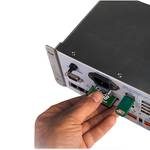
Servitization as a business strategy is sweeping through most industrial sectors. It has benefi ts for all parties on the sell side and buy side. For the manufacturer it provides competitive differentiation, deeper relationships with customers, enhanced customer satisfaction and loyalty, and a source of recurring revenues. For the customer it provides more value for the money and lower cost of ownership, as well as faster and better after-sale service and support. It is clearly the wave of the future in business relationships, and the time is right for the maritime industry to climb aboard.
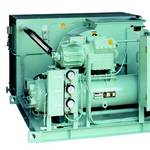
In Japan, there is a maritime industry cluster of businesses, which include ship owners, shipbuilding companies and ship machinery and equipment makers. New products have been developed, while others have been improved within the framework of this maritime cluster. Japan has completed many vessels of a wide variety of types for years. Boasting high levels of performance and quality, Japan-built ships are highly rated by ship owners worldwide.
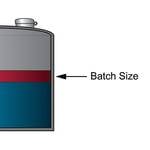
Accurate, on-the-spot measurement of marine bunkering is critical for both cost control and relationship management. The Micro Motion® Certified Marine Bunker Measurement Solution (CBMS) provides highly accurate data plus a bunker ticket that is available immediately after the bunker is complete. Depending on the implementation, the bunker measurement is certified by Nederlands Meetinstituut (NMi), the notified body for testing to the guidelines of the European Instruments Directive (MID) and Issuing Authority for OIML (International Organization for Legal Metrology). The Micro Motion meter meets the OIML standard R117-1 and the overall solution meets MID Directive 2004/22/EC Annex MI-005. During a meter trial, the Micro Motion system is frequently compared to the existing volumetric system, or to the volumetric system used by the other party. The comparison typically yields discrepancies that mistakenly call the new system into question. This white paper provides a brief overview of the Micro Motion Certified Marine Bunker Measurement Solution, then examines all the sources of measurement discrepancy and demonstrates that the apparent issues can be caused by a combination of the inherent uncertainties in volumetric measurement and inconsistent bunkering procedures. When appropriate bunkering procedures are followed, the Micro Motion system provides superior accuracy and should be used as the standard. The use of mass flowmeters (MFMs) is becoming standard practice in the transfer of marine fuel. The Marine Port Authority (MPA) of Singapore, which represents a large share of the global bunkering market, announced in April 2014 that the use of MFMs would be mandatory by the start of 2017. MFMs reduce the number of quantity disputes, eliminate time spent performing sounding operations before and after the delivery, and provide suppliers with powerful diagnostic tools for improving their processes. In addition, the MFM can provide the user with additional process metrics that help to prove the accuracy of their delivery quantities as well as their product quality. It is easy to see why MFMs are becoming the industry standard. ExxonMobil Marine Fuels & Lubricants was the first bunker fuel supplier in the marine industry to use a MFMS that has been approved by the Maritime and Port Authority of Singapore for bunker fuel deliveries.
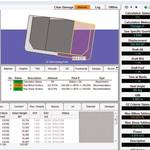
(Herbert-ABS), sets the standard for leading edge stability, load management and emergency response software solutions for the marine and offshore industries. A joint venture between Herbert Engineering Corporation and American Bureau of Shipping, Herbert-ABS supplies quality marine and offshore software products that include LMP-Offshore (offshore load management), CargoMaxTM (shipboard trim, stability and loading) and HECSALVTM (salvage engineering and design). Herbert-ABS is headquartered in San Francisco, with site offices in Glasgow, Singapore, Busan and Shanghai. Herbert-ABS recognizes that success comes from putting their customers first in terms of on-time deliveries, technical excellence and after sales support. The company offers user-friendly software, which is continuously enhanced to meet the needs of the industry.
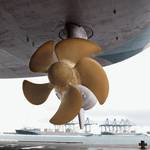
When the Environmental Protection Agency (EPA) issued the new Vessel General Permit (VGP) in December 2013, lubricant and fluid manufacturers were prepared to give vessel owners a number of environmentally acceptable lubricants (EAL) to work with. EAL usage is now essentially required for any application on vessels where incidental lubricant discharge could occur in the marine environment. Those applications include stern tubes, thrusters, stabilizers, CPP propellers, and wire rope and mechanical equipment immersed in water during normal operation.
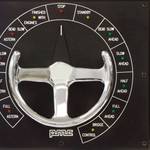
Prime Mover Controls (PMC), based in Burnaby, B.C., Canada, began in 1969 as a small governor service shop, servicing virtually all types of Woodward governors. Over the years, PMC has kept up with new developments in governor technology and has maintained a dedicated and experienced staff of service technicians, as well as extensive test equipment. Servicing and adapting new Woodward governors to a wide variety of applications, both on and offshore, continues to be a significant part of PMC’s business.
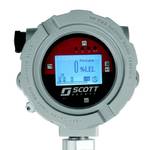
Protecting your people and your physical structure, while ensuring business continuity, are the most important functions of a fixed gas detection solution. Engineering a reliable, high-performance system that makes it easier and more cost effective to meet this challenge is the driving force behind a truly universal approach to gas detection.
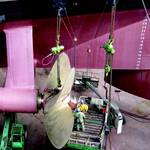
According to Bureau of Labor Statistics, a total of 717 work injuries occurred as a result of contact with objects and equipment in 2013. Roughly, 245 of them were struck by falling objects and another 105 workers were fatally injured after being caught in running equipment or machinery. Needless to say, anything can happen on a jobsite. Your equipment could malfunction or the weather might cause a whirlwind of unexpected issues, or even worse, someone could get hurt. Unfortunately, not much can be done when circumstances such as those arise, which is why developing preventive strategies is crucial to having a successful and safe project. One of those strategies is always choosing safe and reliable lifting equipment. But the question that remains is: is it safer to rent or to buy?
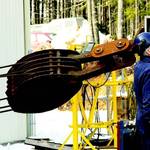
Hawboldt Industries was founded in 1906 in Chester, a small town in rural Nova Scotia, Canada. After more than 100 years, the company still resides in the same town but its business and product focus has changed dramatically. From its humble beginnings primarily servicing the local Nova Scotia marine and fishing market, Hawboldt products now reach a global customer base and serve a dynamic group of market segments.

GE Marine is one of the world’s leading manufacturers of marine propulsion products, systems and services including aeroderivative gas turbines. These highly efficient marine engines meet current and future emission regulations, and offer superior availability for various commercial and military applications. GE gas turbine propulsion systems and solutions are being used in some of the most novel projects such as to power the world’s fastest commercial ship as well as the United States Navy’s new LHD amphibious assault ship.
The National Oceanic and Atmospheric Administration (NOAA) estimates that more than 700 million gallons of petroleum enter the environment each year, more than half of which is due to irresponsible discharges and illegal disposal. Oil leakage from stern tubes, once considered a part of normal operational consumption of oil by ocean-going vessels, has become an issue of concern and is now considered oil pollution.